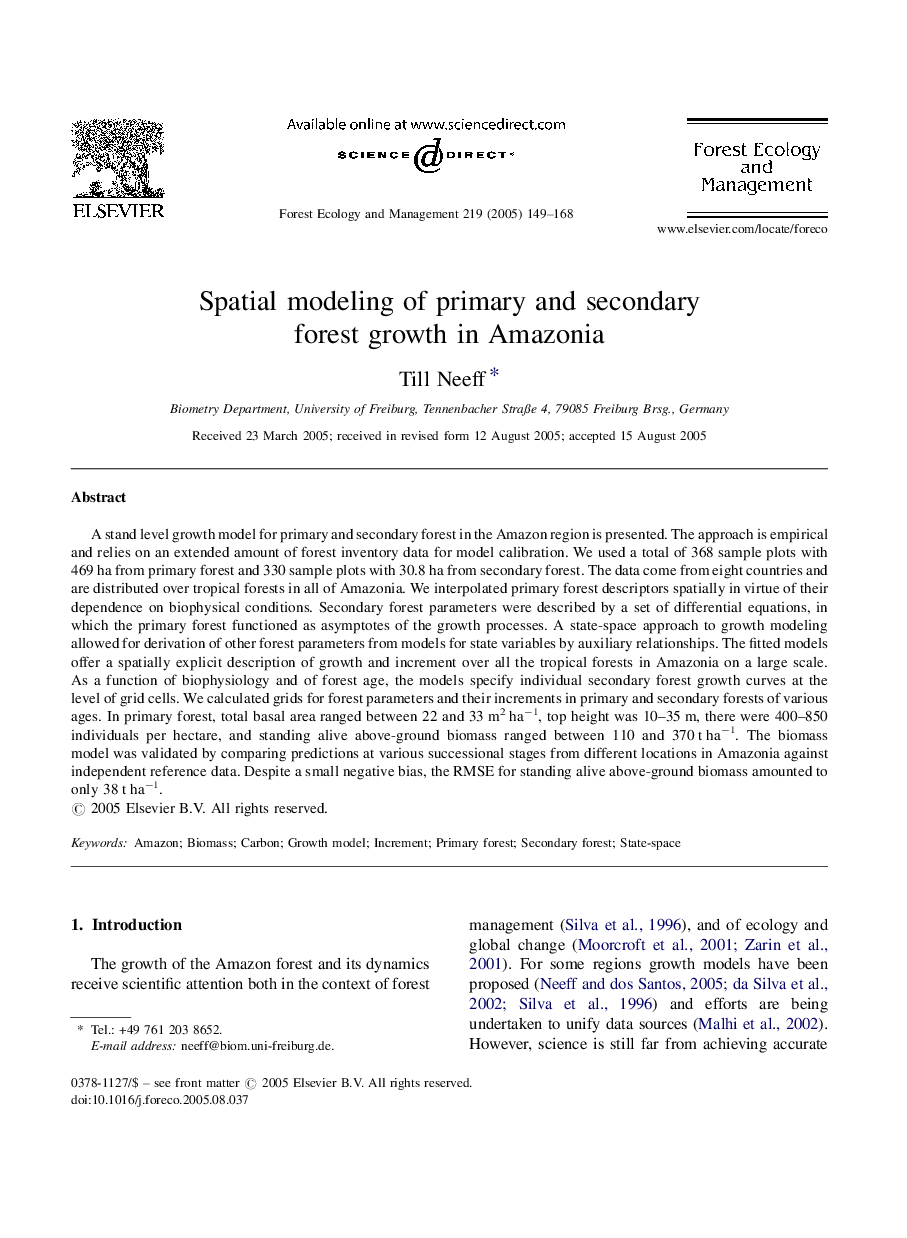| Article ID | Journal | Published Year | Pages | File Type |
|---|---|---|---|---|
| 9620102 | Forest Ecology and Management | 2005 | 20 Pages |
Abstract
A stand level growth model for primary and secondary forest in the Amazon region is presented. The approach is empirical and relies on an extended amount of forest inventory data for model calibration. We used a total of 368 sample plots with 469 ha from primary forest and 330 sample plots with 30.8 ha from secondary forest. The data come from eight countries and are distributed over tropical forests in all of Amazonia. We interpolated primary forest descriptors spatially in virtue of their dependence on biophysical conditions. Secondary forest parameters were described by a set of differential equations, in which the primary forest functioned as asymptotes of the growth processes. A state-space approach to growth modeling allowed for derivation of other forest parameters from models for state variables by auxiliary relationships. The fitted models offer a spatially explicit description of growth and increment over all the tropical forests in Amazonia on a large scale. As a function of biophysiology and of forest age, the models specify individual secondary forest growth curves at the level of grid cells. We calculated grids for forest parameters and their increments in primary and secondary forests of various ages. In primary forest, total basal area ranged between 22 and 33 m2 haâ1, top height was 10-35 m, there were 400-850 individuals per hectare, and standing alive above-ground biomass ranged between 110 and 370 t haâ1. The biomass model was validated by comparing predictions at various successional stages from different locations in Amazonia against independent reference data. Despite a small negative bias, the RMSE for standing alive above-ground biomass amounted to only 38 t haâ1.
Related Topics
Life Sciences
Agricultural and Biological Sciences
Ecology, Evolution, Behavior and Systematics
Authors
Till Neeff,
